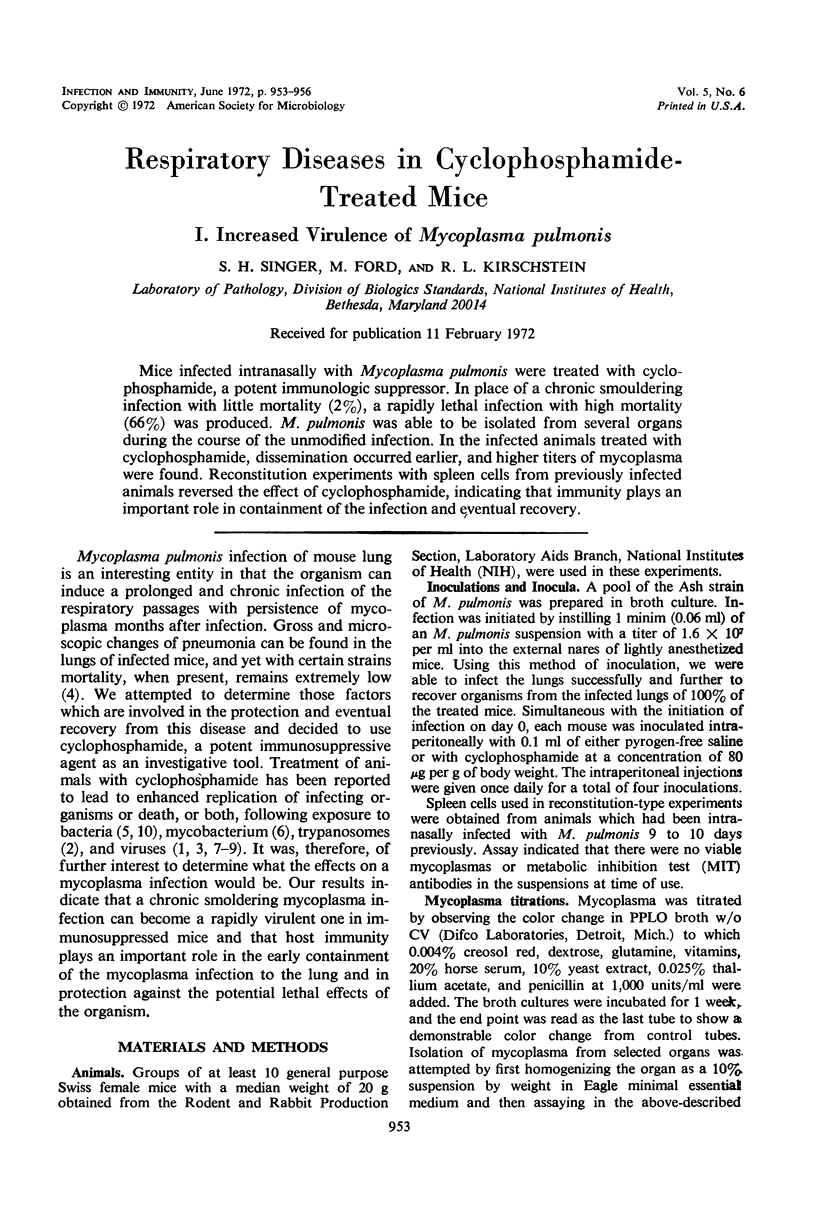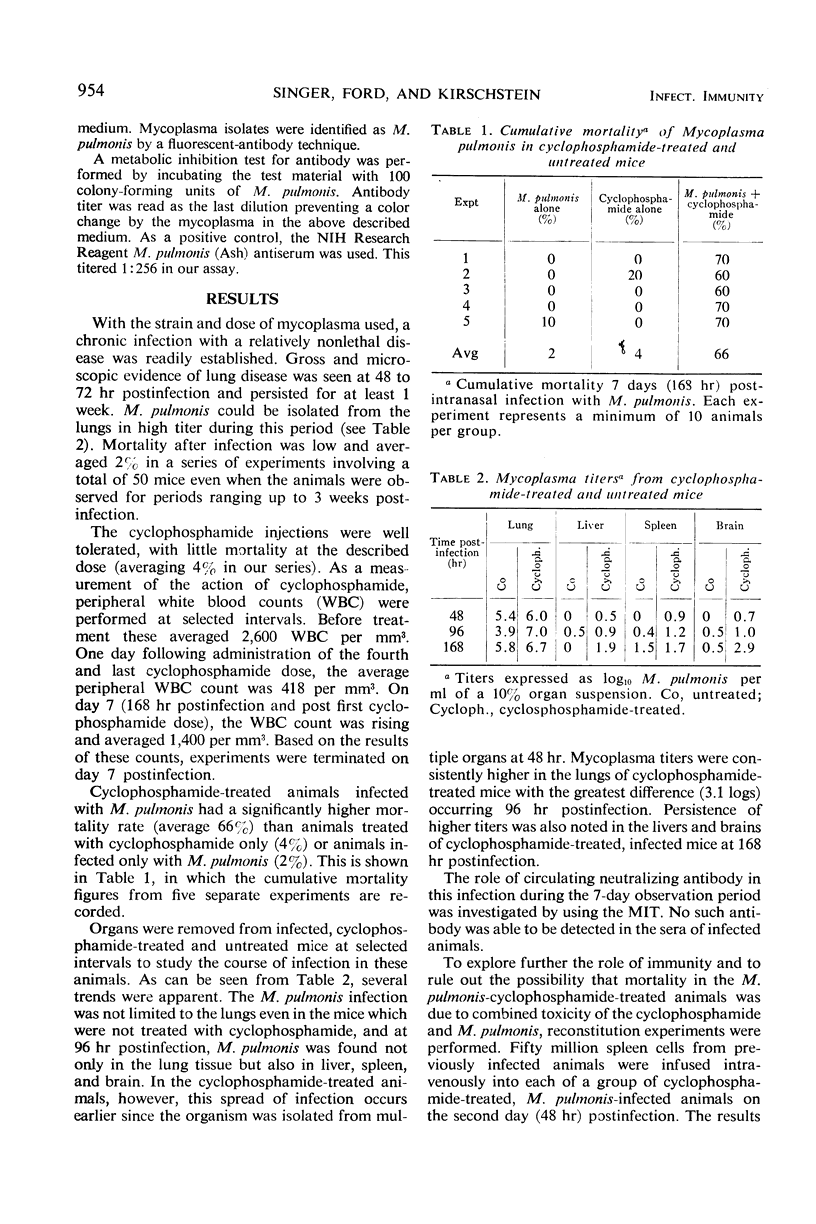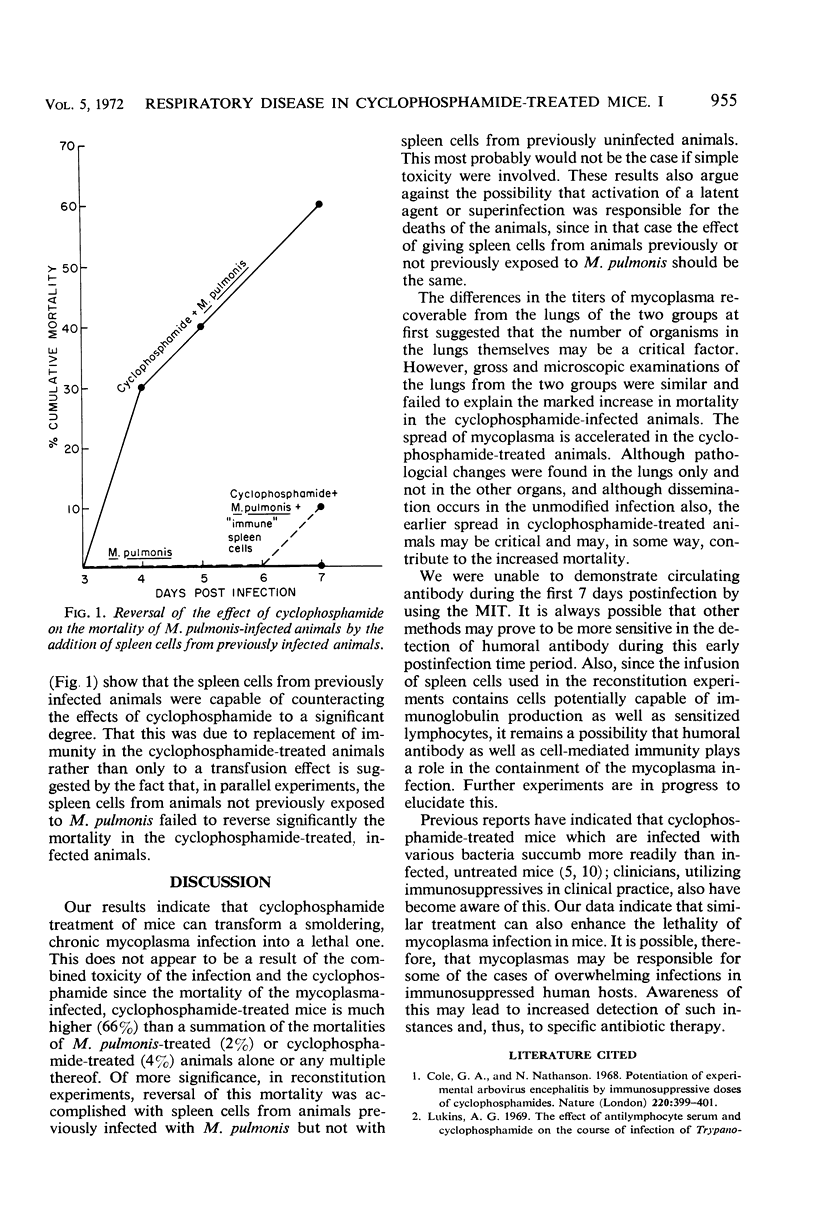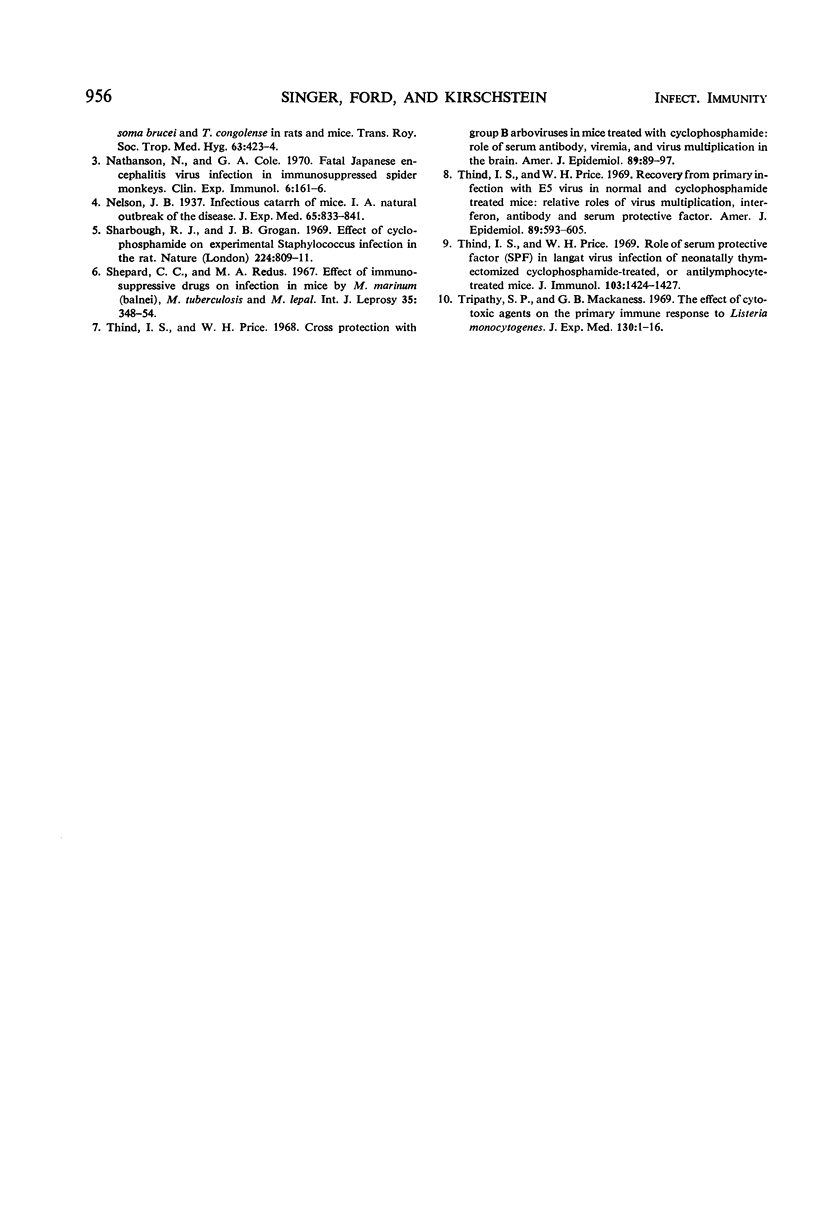Abstract
Mice infected intranasally with Mycoplasma pulmonis were treated with cyclophosphamide, a potent immunologic suppressor. In place of a chronic smouldering infection with little mortality (2%), a rapidly lethal infection with high mortality (66%) was produced. M. pulmonis was able to be isolated from several organs during the course of the unmodified infection. In the infected animals treated with cyclophosphamide, dissemination occurred earlier, and higher titers of mycoplasma were found. Reconstitution experiments with spleen cells from previously infected animals reversed the effect of cyclophosphamide, indicating that immunity plays an important role in containment of the infection and eventual recovery.
Full text
PDF



Selected References
These references are in PubMed. This may not be the complete list of references from this article.
- Cole G. A., Nathanson N. Potentiation of experimental arbovirus encephalitis by immunosuppressive doses of cyclophosphamide. Nature. 1968 Oct 26;220(5165):399–401. doi: 10.1038/220399a0. [DOI] [PubMed] [Google Scholar]
- Nathanson N., Cole G. A. Fatal Japanese encephalitis virus infection in immunosuppresed spider monkeys. Clin Exp Immunol. 1970 Jan;6(1):161–166. [PMC free article] [PubMed] [Google Scholar]
- Sharbaugh R. J., Grogan J. B. Effect of cyclophosphamide on experimental staphylococcus infection in the rat. Nature. 1969 Nov 22;224(5221):809–810. doi: 10.1038/224809a0. [DOI] [PubMed] [Google Scholar]
- Shepard C. C., Redus M. A. Effect of immunosuppressive drugs on infection in mice by M. marinum (balnei), M. tuberculosis and M. leprae. Int J Lepr Other Mycobact Dis. 1967 Jul-Sep;35(3):348–354. [PubMed] [Google Scholar]
- Thind I. S., Price W. H. Cross-protection with group B arboviruses in mice treated with cyclophosphamide: role of serum antibody, viremia, and virus multiplication in the brain. Am J Epidemiol. 1969 Jan;89(1):89–97. doi: 10.1093/oxfordjournals.aje.a120919. [DOI] [PubMed] [Google Scholar]
- Thind I. S., Price W. H. Recovery from primary infection with Langat E5 virus in normal and cyclophosphamide treated mice: relative roles of virus multiplication, interferon, antibody and serum protective factor. Am J Epidemiol. 1969 May;89(5):593–605. doi: 10.1093/oxfordjournals.aje.a120972. [DOI] [PubMed] [Google Scholar]
- Thind I. S., Price W. H. Role of serum protective factor (SPF) in Langat virus infection of neonatally thymectomized, cyclophosphamide-treated, or antilymphocyte-treated mice. J Immunol. 1969 Dec;103(6):1424–1427. [PubMed] [Google Scholar]
- Tripathy S. P., Mackaness G. B. The effect of cytotoxic agents on the primary immune response to Listeria monocytogenes. J Exp Med. 1969 Jul 1;130(1):1–16. doi: 10.1084/jem.130.1.1. [DOI] [PMC free article] [PubMed] [Google Scholar]


